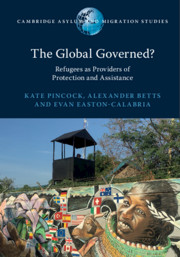1 - Introduction
Published online by Cambridge University Press: 06 March 2020
Summary
This chapter introduces the key ideas and questions that inform this work, as well as the overall structure of the subsequent chapters. Across the low- and middle-income countries that host 85 per cent of the world’s refugees, protection and assistance is provided to refugees by United Nations organisations in collaboration with a network of NGO ‘implementing partners’. The dominant humanitarian model is usually premised upon a provider-beneficiary relationship: international organisations are the protectors and refugees are the protected. In parallel to this model, however, is a largely neglected story: refugees themselves frequently mobilise to create community-based organisations or informal networks as alternative providers of social protection. They mobilise bottom-up to provide sources of assistance to other refugees in areas as diverse as education, health, livelihoods, finance and housing. Despite their importance to refugees, however, for a number of reasons introduced in this chapter, refugee-led organisations (sometimes referred to as refugee community organisations, or RCOs) generally receive little international recognition or support.
Keywords
Information
- Type
- Chapter
- Information
- The Global Governed?Refugees as Providers of Protection and Assistance, pp. 1 - 14Publisher: Cambridge University PressPrint publication year: 2020
